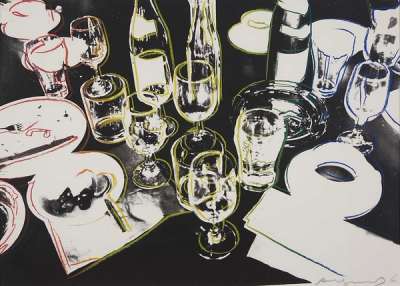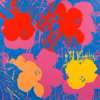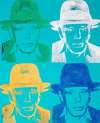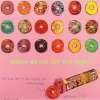After
the Party
Released in a signed edition of 100, Andy Warhol’s After The Party (1979) is tinged with the glamour and hedonism of his Factory’s heyday. Primarily his studio, the Factory was also a notorious party venue for Warhol’s entourage—After the Party shares this buzzing atmosphere, but has a more reflective undertone, too.
Andy Warhol After the Party For sale
After the Party Value (5 Years)
With £148842 in the past 12 months, Andy Warhol's After the Party series is one of the most actively traded in the market. Prices have varied significantly – from £1360 to £42191 – driven by fluctuations in factors like condition, provenance, and market timing. Over the past 12 months, the average selling price was £21263, with an average annual growth rate of 9.78% across the series.
After the Party Market value
Auction Results
| Artwork | Auction Date | Auction House | Return to Seller | Hammer Price | Buyer Paid |
|---|---|---|---|---|---|
 After The Party (F. & S. II.183) Andy Warhol Signed Print | 9 Dec 2025 | Bonhams New Bond Street | £14,450 | £17,000 | £22,000 |
 After The Party (F. & S. II.183) Andy Warhol Unsigned Print | 19 Sept 2025 | Phillips London | £13,600 | £16,000 | £23,000 |
Sell Your Art
with Us
with Us
Join Our Network of Collectors. Buy, Sell and Track Demand
Meaning & Analysis
After the Party illustrates the aftermath of a raucous soiree, haphazard and effortless in composition and indicative of Warhol’s own lifestyle Through the work’s haphazard and effortless composition of empty glasses, ash trays, cigarette butts and clutter, there is a key sense of disarray, a feeling of gluttony. This is in part due to the photographic quality of the work, the chaotic arrangement of the glasses and the vivid tints that outline the objects.
The Factory, Warhol's famous studio, closed in 1987, so it was at the very height of the Factory’s lifetime in 1979, that Warhol printed and published his After the Party series.
When Warhol opened the Factory in 1964. It was a space where he created his most famous works and where celebrities flocked to, it soon became New York’s hottest and most exclusive party spot in town. The party guests were eccentric, provocative and, most of all, famous. Warhol admitted to using the social scene of the Factory as a space to study the life of celebrities and as he did too many, paint them. “I’ve always been fascinated by the assumptions that rich kids make,” Warhol said. “A lot of them think it’s normal, the way they live – because it’s all they’ve ever known. I love to watch their minds operate.”
The entire print run has the overall appearance of a series of exposure photographs. There has always been an inextricable link between Warhol, photography and his art. He referred to his Polaroid Big Shot camera as, his “pencil and paper”. The Polaroid prints served as subjects for Warhol's drawings, silkscreens and paintings and were often also used as preliminary inspiration.
The prints evoke ideas of gilded prosperity and excess of some apparent glamour, hiding something darker. Each print of After the Party has a unique colourful addition outlining the objects within the composition, making no two prints completely alike. This outline, which Warhol worked with his printer to produce, was there to highlight objects and break up the monochromatic black and white. Effectively, it seemingly alluding to the hazy effects of alcohol and drugs. Each colour in the series that form the outlines were created by a separate screen print a technically intricate process, varying each printed screen print and putting them highly in demand.













